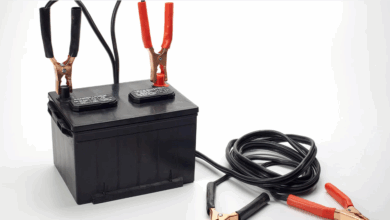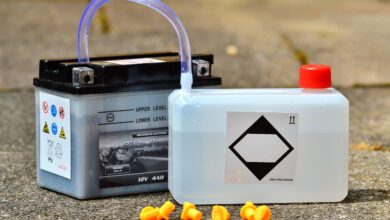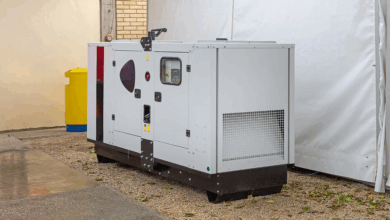Buying the Best Home Generator: What You Need to Know

Buying the Best Home Generator: What You Need to Know
Few things disrupt modern life quite like a power outage. The lights go out, the refrigerator stops humming, the Wi-Fi cuts off, and suddenly, the conveniences we rely on daily vanish. Whether it’s a brief flicker or a multi-day event caused by severe weather or grid issues, losing power is inconvenient, uncomfortable, and can even be costly (think spoiled food or frozen pipes).
This is where a home generator comes in. Acting as a reliable backup power source, a generator can keep essential systems running, maintain comfort, and provide peace of mind during an outage. But buying a generator isn’t a one-size-fits-all decision. With various types, sizes, and features available, choosing the best one for your needs requires careful consideration. This guide will walk you through everything you need to know.
Why Do You Need a Home Generator?
Beyond the obvious reason of having lights during a blackout, a generator offers significant benefits:
- Comfort and Convenience: Keep heating/cooling systems, lights, and appliances running.
- Safety: Power security systems, medical equipment (like oxygen concentrators), and sump pumps to prevent flooding.
- Food Preservation: Keep refrigerators and freezers cold, saving hundreds of dollars in spoiled food.
- Work and Communication: Maintain power for computers, modems, and charging devices, essential for remote work or staying connected.
- Property Protection: Prevent issues like frozen pipes in winter outages.
Understanding the Different Types of Home Generators
Home generators broadly fall into a few main categories:
-
Portable Generators:
- Description: These are the most common and often most affordable option. They are designed to be moved and typically run on gasoline, propane, or sometimes diesel. You manually start them (usually with a pull cord or electric start) and plug appliances directly into the generator’s outlets or connect them via a transfer switch (more on this later).
- Pros: Relatively inexpensive, mobile, good for powering specific appliances or tools during an outage or for recreational use (camping, tailgating).
- Cons: Requires manual operation, needs to be refueled frequently, can be noisy, must be operated outdoors far from the house due to carbon monoxide risk, typically less powerful than standby units.
-
Standby Generators:
- Description: These are permanently installed outside your home, similar to an air conditioning unit. They are connected directly to your home’s electrical panel via an automatic transfer switch. When utility power fails, the transfer switch detects it and automatically starts the generator, seamlessly restoring power within seconds or minutes. They typically run on natural gas or propane from your home’s supply.
- Pros: Automatic operation (hands-free), can power a large portion or even the entire house, runs on a continuous fuel source (natural gas or large propane tank), less noisy than portable units, adds home value.
- Cons: Significantly more expensive to purchase and install than portable units, requires professional installation by an electrician and possibly a plumber/gas fitter, fixed location.
- Inverter Generators:
- Description: Often a type of portable generator, inverter generators use advanced technology to produce AC power, convert it to DC, and then back to clean AC power. This multi-step process results in more stable power (safe for sensitive electronics) and quieter operation. They are also often more fuel-efficient and can adjust engine speed based on the load.
- Pros: Quiet operation, fuel-efficient, produces clean power safe for electronics (laptops, phones, medical devices), relatively lightweight and portable.
- Cons: Generally more expensive than conventional portable generators of similar wattage, typically lower wattage capacity compared to the largest conventional portables or standby units.
Key Factors When Choosing a Home Generator
Selecting the right generator involves evaluating several critical factors:
-
Power Requirements (Sizing): This is arguably the most important step. You need to determine how much wattage you’ll need to power the essential appliances and systems you want to run during an outage.
- Essential vs. Whole House: Will you power just the critical items (refrigerator, lights, furnace fan, sump pump) or major appliances like central AC, electric stove, and well pump as well?
- Calculating Wattage: List all the items you want to power simultaneously. Find the running wattage (the power needed to keep it operating) and the starting wattage (the surge of power needed to start motors, like in refrigerators, well pumps, or HVAC systems) for each. Add up the running wattages. Identify the item with the highest starting wattage among those you want to power. Add this highest starting wattage to the total running wattage. This gives you a rough estimate of the minimum starting wattage your generator should handle. Always round up or add a buffer. Generator manufacturers provide wattage ratings (running and starting). Pro tip: An electrician can perform a professional load calculation for your home.
-
Fuel Type: Generators run on different fuels, each with pros and cons:
- Natural Gas: Unlimited supply (if the grid is up), no need for refueling, less expensive per BTU in some areas, cleaner burning. Requires a natural gas line connection. Power output can be slightly lower compared to propane or gasoline on the same engine.
- Propane: Stores indefinitely in tanks, clean burning, relatively easy to store. Can be more expensive than natural gas or gasoline. Requires managing tank levels and arranging refills. Power output is generally good.
- Gasoline: Widely available. Easy to refuel portable units. Stores poorly (degrades over time), highly flammable, produces more emissions, requires manual refueling during extended outages.
- Diesel: More fuel-efficient than gasoline, stores better than gasoline. Diesel generators are typically more expensive, heavier, and louder. Diesel fuel can gel in very cold temperatures.
-
Installation Location and Safety: Generators produce carbon monoxide, a colorless, odorless, lethal gas. They must be operated outdoors in a well-ventilated area, far from windows, doors, and vents to prevent fumes from entering the home. Standby generators have specific clearance requirements. Portable generators need to be at least 15-20 feet away.
-
Noise Levels: Generators can be noisy, measured in decibels (dB). Portable generators are generally the loudest (often 70-80 dB at 23 feet), while inverter generators are significantly quieter (50-60 dB). Standby units fall somewhere in between but are installed away from living areas. Consider your neighbors and local noise ordinances.
-
Transfer Switch: This is a critical safety component. Connecting a generator directly to your home’s electrical panel without a transfer switch (known as "backfeeding") is extremely dangerous. It can send power back down the utility lines, potentially electrocuting utility workers. A transfer switch isolates your home’s electrical system from the grid when the generator is running.
- Automatic Transfer Switch: Essential for standby generators, detects power loss, starts the generator, and switches the power source automatically.
- Manual Transfer Switch: Used with portable generators. You manually start the generator and then flip switches on the transfer switch to select which circuits receive power from the generator. An interlock kit is another manual option that mechanically prevents the main breaker and generator breaker from being on simultaneously.
-
Budget: Generator costs vary widely. Portable units can range from a few hundred to a couple of thousand dollars. Standby generators, including installation, can cost anywhere from $5,000 to $20,000 or more depending on size and complexity.
-
Features: Consider features like:
- Electric Start: Much easier than pull-start, especially for larger units.
- Low-Oil Shutoff: Protects the engine from damage.
- Fuel Gauge: Helps you monitor fuel levels.
- Multiple Outlets/Circuit Breakers: Allows you to connect various devices safely.
- Remote Start: Convenient for starting the generator from indoors.
- GFCI Outlets: Important for safety when using tools outdoors.
- Wheel Kits: Essential for moving larger portable units.
-
Brand Reputation and Warranty: Choose reputable brands known for reliability and customer support. Check the warranty period and what it covers.
- Maintenance: Like any engine, generators require regular maintenance (oil changes, filter replacements, checking spark plugs) to ensure they run when needed. Standby generators often have recommended service intervals and remote monitoring capabilities.
Buying and Installation
Portable generators can be purchased at home improvement stores, hardware stores, and online retailers. Standby generators are typically purchased through authorized dealers or electricians who specialize in generator installation. Professional installation is essential for standby generators and highly recommended for installing any type of transfer switch to ensure safety and compliance with electrical codes.
Frequently Asked Questions (FAQs)
Q: How do I figure out what size generator I need?
A: Make a list of all the appliances and systems you want to power. Find their running wattage and identify the one with the highest starting wattage. Add all running wattages together, then add the highest starting wattage. This gives you a minimum requirement. It’s often wise to add a buffer or consult an electrician for a precise load calculation.
Q: What’s the main difference between a portable and a standby generator?
A: Portable generators are manually operated, movable, and power items via cords or a manual transfer switch. Standby generators are permanently installed, connect to your home’s fuel supply, and turn on automatically via an automatic transfer switch when power is lost, often powering more of your home.
Q: Is professional installation necessary?
A: For standby generators and the installation of any type of transfer switch (manual or automatic), professional installation by a qualified electrician is essential for safety, code compliance, and proper function. Portable generators can be used with extension cords (rated for outdoor use and the load) or plugged into a professionally installed transfer switch.
Q: Can I run a generator indoors or in my garage?
A: ABSOLUTELY NOT. Generators produce deadly carbon monoxide fumes. They must always be operated outdoors in a well-ventilated area, far away from windows, doors, and vents.
Q: What kind of maintenance does a generator need?
A: Regular maintenance includes checking and changing the oil, inspecting or replacing air filters and spark plugs, checking fuel lines, and running the generator periodically (under a load if possible) to ensure it starts and runs properly. Follow the manufacturer’s maintenance schedule.
Q: How long can a generator run continuously?
A: This depends on the generator type, fuel source, and load. Portable gasoline generators might run for 8-12 hours on a tank at half load. Standby generators running on natural gas can theoretically run indefinitely as long as the gas supply is active and the unit is maintained. Propane run time depends on the size of the tank.
Conclusion
Investing in a home generator is an investment in comfort, safety, and security during unpredictable power outages. Choosing the best generator requires understanding your power needs, considering the different types and fuel sources available, prioritizing safety features like transfer switches and proper ventilation, and factoring in installation and ongoing maintenance costs.
By carefully evaluating these points and potentially consulting with a professional, you can select a generator that provides reliable backup power tailored to your specific needs, ensuring that the next time the lights go out, you’re prepared.




![How to Bypass CO Sensor on Generator – [4-Step Safety Guide]](https://www.generator411.com/wp-content/uploads/2025/08/co-sensor-on-generator-390x220.png)